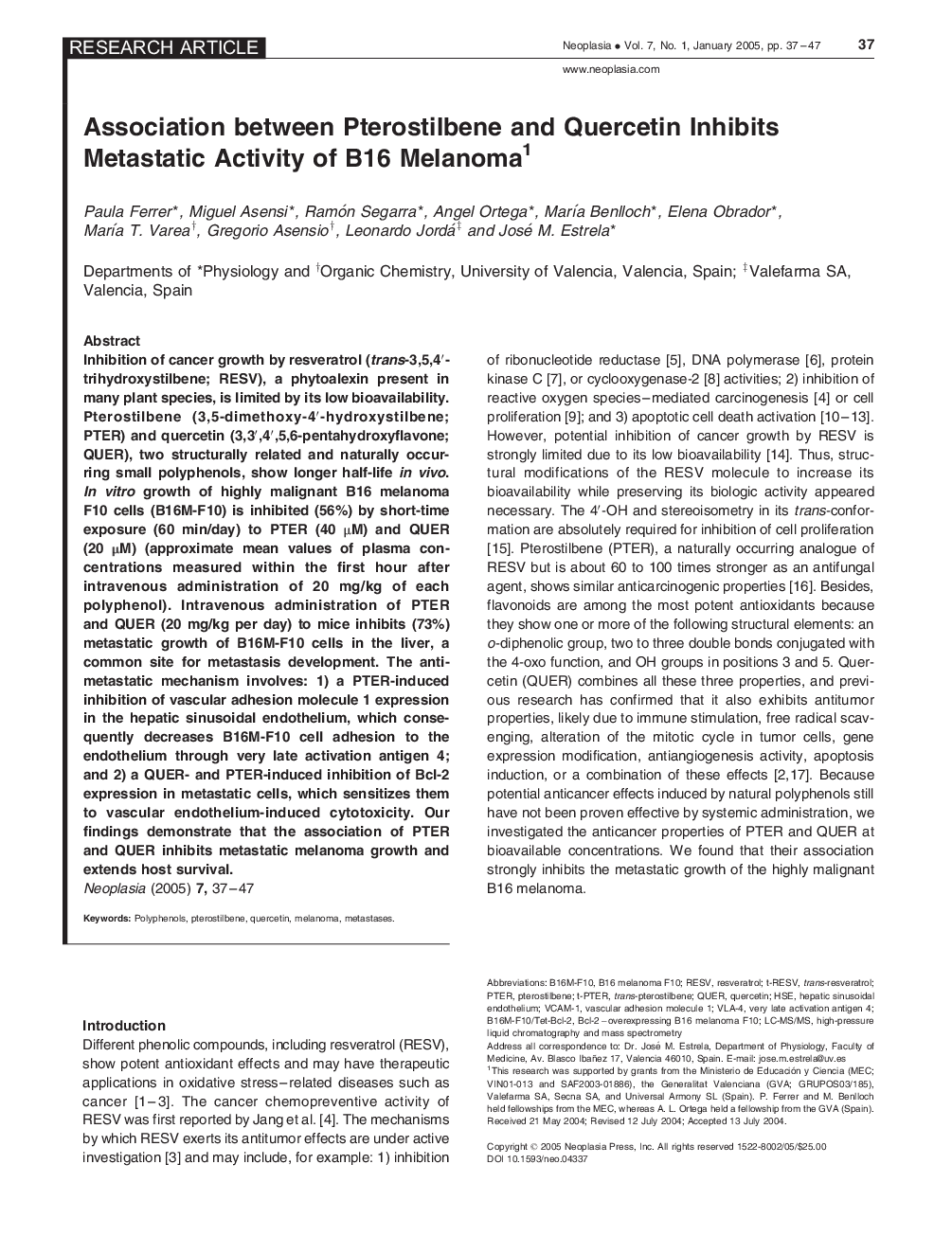| Article ID | Journal | Published Year | Pages | File Type |
|---|---|---|---|---|
| 10915450 | Neoplasia | 2005 | 11 Pages |
Abstract
Inhibition of cancer growth by resveratrol (trans-3,5,4'trihydroxystilbene; RESV), a phytoalexin present in many plant species, is limited by its low bioavailability. Pterostilbene (3,5-dimethoxy-4'-hydroxystilbene; PTER) and quercetin (3,3',4',5,6-pentahydroxyflavone; QUER), two structurally related and naturally occurring small polyphenols, show longer half-life in vivo. In vitro growth of highly malignant B16 melanoma F10 cells (B16M-F10) is inhibited (56%) by short-time exposure (60 min/day) to PTER (40 μM) and QUER (20 μM) (approximate mean values of plasma concentrations measured within the first hour after intravenous administration of 20 mg/kg of each polyphenol). Intravenous administration of PTER and QUER (20 mg/kg per day) to mice inhibits (73%) metastatic growth of B16M-F10 cells in the liver, a common site for metastasis development. The antimetastatic mechanism involves: 1) a PTER-induced inhibition of vascular adhesion molecule 1 expression in the hepatic sinusoidal endothelium, which consequently decreases B16M-F10 cell adhesion to the endothelium through very late activation antigen 4; and 2) a QUER- and PTER-induced inhibition of Bcl-2 expression in metastatic cells, which sensitizes them to vascular endothelium-induced cytotoxicity. Our findings demonstrate that the association of PTER and QUER inhibits metastatic melanoma growth and extends host survival.
Keywords
Related Topics
Life Sciences
Biochemistry, Genetics and Molecular Biology
Cancer Research
Authors
Paula Ferrer, Miguel Asensi, Ramón Segarra, Angel Ortega, MarÃa Benlloch, Elena Obrador, Maria T. Varea, Gregorio Asensio, Leonardo Jordá, José M. Estrela,
